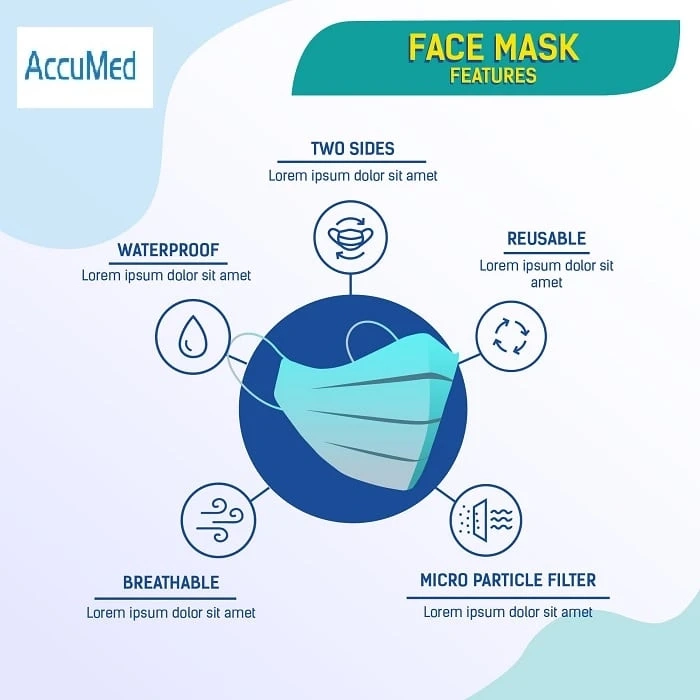The first recommendation for using a mask in April 2020 was to protect others—family, friends, and the elderly or immune-compromised person in the grocery store. According to the Centers for Disease Control and Prevention, there is more and more evidence that wearing a mask to stop the spread of SARS-CoV-2, the virus that causes COVID-19, is important for your own safety.
The science is crystal clear on this—masks are critical in slowing and preventing the spread of COVID-19. Physical distancing and avoiding gatherings are critical, but "basically, anytime you're with anyone who is not a member of your immediate household or in any public space after leaving your house, you should be wearing a mask." It should be a part of our uniform, just as shoes are.
It's simply something that people have grown accustomed to. At the same time, some people do not want to wear masks, and science does not always dictate that. The science is clear on this point—masks, along with vaccines, are critical tools for halting the spread of COVID-19.
Since SARS-CoV-2 is primarily transmitted via respiratory droplets and aerosol particles generated when people speak, breathe, sneeze, or cough, the CDC recommends that the community wear masks. Medical experts told people how to choose the right mask to stop the spread of COVID-19 based on this advice from the CDC.
Masks that fit properly
When selecting a mask, it is critical to ensure that it fits properly. This means that it fits snugly around the nose and chin, leaving no large gaps on the sides of the face. The mask should be comfortable. Wear it consistently and ensure that it completely covers your mouth and nose. Avoid ill-fitting masks such as spandex neck gaiters that do not stay in place for the majority of people. Gaiters are not lined, which was one of the concerns about them.
NIOSH approved N95 respirators
With N95 mask approved by the National Institute for Occupational Safety and Health (NIOSH) no longer in short supply, the CDC recommends that individuals may choose to wear a basic, disposable N95 respirator for personal use instead of a cloth mask in certain situations. When approved by NIOSH, N95 respirators filter up to 95% of particles in the air, and a proper fit can be achieved.
Individuals should, however, be aware of the numerous counterfeit respirators available on the market. It is critical to be able to distinguish and select genuine N95 respirators from counterfeit N95s. People should know that about 60% of the KN95 respirators sold in the United States are fake and don't meet NIOSH standards.
Given the contagious nature of Omicron, some experts recommend upgrading from a cloth mask to an N95 or KF94 when entering public indoor spaces. These masks are made of an electrostatic material that helps keep people from getting virus particles in their air.
However, do not layer an N95 mask or respirator on top of another, and omit the N95 respirator if you have certain types of facial hair. Furthermore, while smaller-sized respirators are available, they are typically designed for use by adults in the workplace and have not been tested for widespread use in children, according to the CDC. The CDC has additional information on when to wear—and when not to wear—an N95 respirator.
Consider the possibility of double masking.
At the very least, while Omicron and Delta variants continue to spread, individuals should consider wearing two masks—or double masking. This entails layering a cloth mask over a surgical mask to achieve a more secure fit. A mask fitter can also help people make their masks fit better for more protection.
By adding additional layers of material to a mask—or by wearing two masks—the number of respiratory droplets containing the virus that enter the mask is reduced. When one person wears a cloth mask over a surgical mask and the other does not, 85.4 percent of the particles emitted during coughing are blocked. While double masking or a mask fitter does not provide the same level of protection as an N95 respirator, they are a significant improvement over using only a cloth mask.
Multi layer, tightly woven cloth masks
Multi layer cloth masks can effectively block 50–70% of fine droplets and particles. They can also help limit the forward spread of uncaptured droplets and particles, the CDC notes. Indeed, some studies have shown that cloth masks can block up to 80% of the air, which is about the same as surgical masks as source control barriers.
Additional materials, such as silk masks, may aid in the repellence of moist droplets. They may also help reduce fabric wetting, which contributes to the wearer's breath ability and comfort. However, you should have something that is sufficiently thick.
Conclusion
According to the CDC, certain materials can also improve filter effectiveness by generating "triboelectric charge," a type of static electricity. This increases the efficiency of charged particle capture. Medical masks are "disposable"—they are not intended to be worn for an extended period of time. Additionally, if the mask becomes soiled or wet, it should be replaced.


